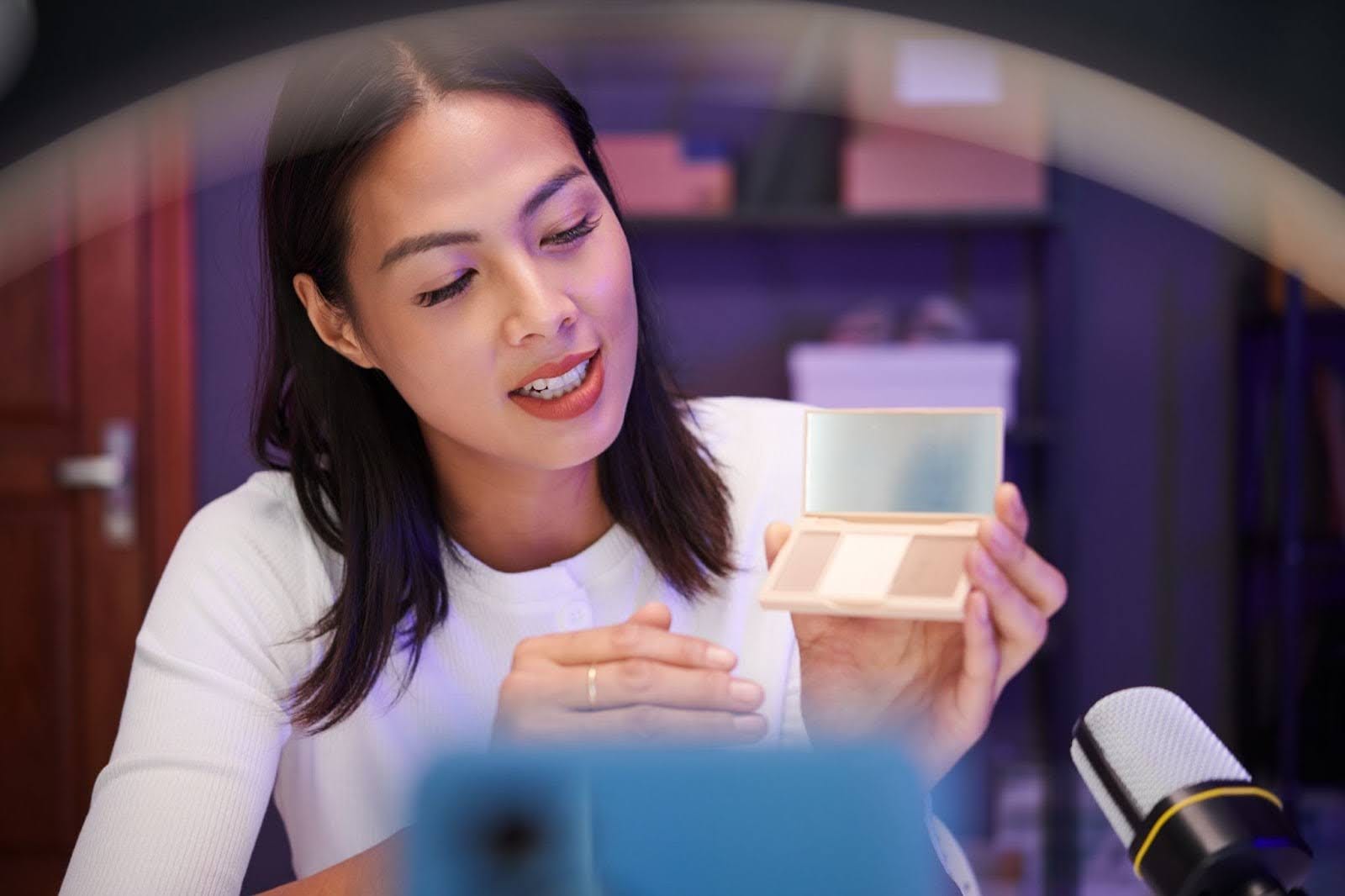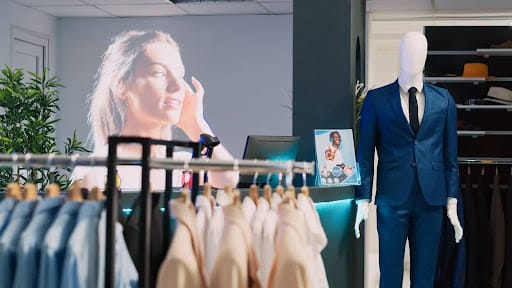Leveraging AR in the Beauty and Fashion Industry for Digital Try-Ons
Leveraging AR in the Beauty and Fashion Industry for Digital Try-Ons
The era of the beauty and fashion industry has always been a trendsetter in adopting innovative technologies to improve customer experiences. One such game-changing advancement is Augmented Reality (AR), the way customers interact with products. AR bridges the gap between physical and digital retail, offering solutions for virtual try-ons, personalized recommendations, and engaging shopping experiences.

How is AR Used in the Beauty Industry
Augmented Reality (AR) helps both the beauty and fashion industries provide more personalized and engaging experiences. Through AR, shoppers can virtually try on makeup, hairstyles, and even clothing before making a purchase, allowing them to see exactly how products will look on them.
AR-powered apps give users the chance to experiment with different shades, styles, and outfits using their smartphones. This reduces uncertainty and builds confidence, making shopping more enjoyable and informed. Augmented reality fashion industry applications also allow consumers to explore new collections in virtual showrooms, blending convenience with innovation.
Beauty and fashion brands also use AR for tutorials and styling guides. Customers can follow step-by-step instructions directly on their screens, which simplifies their shopping experience. Augmented reality in the fashion industry increases convenience, enhances satisfaction, and drives sales, proving it’s a powerful tool for both brands and consumers.
The Evolution of AR in Beauty and Fashion
AR's integration into the beauty and fashion industry started as new but has quickly evolved into a necessity for brands aiming to stay competitive. Initially used for basic virtual mirrors and filters, AR has matured to provide lifelike simulations of products, empowering customers to make informed purchase decisions. This evolution reflects a shift in consumer expectations, where personalization and convenience are Significant
AR in Beauty
Virtual Try-Ons Redefined
One of the most notable applications of AR in the beauty industry is virtual try-ons. These tools allow customers to see how makeup products, hairstyles, or skincare treatments look on their unique features without physically applying them.
Virtual Makeup
Brands are using AR to replicate how foundations, lipsticks, and eyeshadows appear on different skin tones. For instance:
Nykaa: The Indian beauty giant uses AR to help users find their perfect shade by simply uploading a selfie.
Sephora's Virtual Artist: Although a global example, it deserves mention for pioneering the use of AR in exploring over 3,000 makeup products.
Skincare Analysis and Recommendations
AR-based skin scanners analyze users' skin texture, tone, and concerns to provide tailored product recommendations. Such solutions not only boost sales but also enhance customer loyalty through personalized care.
Bridging Physical and Digital Shopping
The fashion industry has embraced AR for both online and offline retail. Here’s how:
Virtual Clothing Fitting
Gone are the days of guessing your size while shopping online. AR-powered fitting rooms simulate how garments fit on a person’s body, factoring in height, weight, and even movement.

Zara: Leveraging AR in their stores, Zara lets customers see 3D models wearing various outfits, offering a hybrid shopping experience.
Accessory and Footwear Try-Ons
Accessories like watches, glasses, and even shoes are now part of AR's expanding portfolio. Brands like Fossil have experimented with AR to showcase how their watches complement various outfits. Similarly, athletic brands use AR to let customers visualize shoe designs from all angles.
Personalization: The Holy Grail of AR in Retail
AR’s ability to collect and analyze user data makes it a powerful tool for delivering personalized shopping experiences. From suggesting products based on previous purchases to tailoring marketing campaigns, AR ensures a seamless customer journey.
Hyper-Personalized Recommendations
Retailers can now offer curated collections based on customer preferences, increasing the likelihood of conversions. For example, AR tools integrated into e-commerce platforms track user preferences and display outfits styled for specific occasions.
Interactive Product Customization
AR allows users to personalize products, such as designing their sneakers or choosing colors and patterns for handbags. This level of interaction not only makes the shopping experience memorable but also adds an emotional connection to the product.
Benefits of AR in Beauty and Fashion
The integration of AR offers numerous advantages for brands and consumers alike:
Enhanced Customer Engagement: AR experiences captivate audiences, leading to longer interaction times and higher brand recall.
Reduced Returns: By enabling virtual try-ons, AR minimizes the guesswork involved in online shopping, reducing return rates.
Sustainability: Virtual testing eliminates the need for physical samples, contributing to eco-friendly retail practices.
Increased Sales: With better-informed customers, the conversion rates are significantly higher.
Challenges and Future of AR in Beauty and Fashion
While AR holds immense potential, its adoption comes with challenges. High development costs, device compatibility issues, and the need for robust internet connectivity are common hurdles. However, as technology advances, these barriers are diminishing.
The Future Landscape
AI Integration: Combining AR with AI will lead to smarter recommendations and hyper-personalized shopping experiences.
AR in Social Media Commerce: Platforms like Instagram and Pinterest are already exploring AR for social selling, providing brands with an additional sales channel.
Physical Retail Transformation: AR will redefine the in-store experience, from interactive mirrors to virtual store assistants.
Case Study: Brand Success with AR
Brands are embracing AR with innovative campaigns tailored to their audience.
Sephora’s Virtual: The brand boosted AR tool engagement with a 28% rise in users, 48% traffic growth, and 70% of shoppers feeling confident using virtual try-on tools.
Reference: AR Makeup Filters - Transforming The Beauty Industry In 2024
L’OREAL: This AR app scans your face to suggest products matching your tone and preferences. With 61% valuing tailored advice, it boosts engagement and sales
Reference: AR Makeup Filters - Transforming The Beauty Industry In 2024
How Agencies and Marketers Can Leverage AR
For creative agencies and marketing managers, AR offers plenty of opportunities to innovate campaigns and drive results
Interactive Ad Campaigns: Use AR to make advertisements more engaging, such as letting users try on a product directly from the ad.
Virtual Pop-Up Stores: Create temporary AR-driven shopping experiences to generate buzz and exclusivity.
AR-Enhanced Content Marketing: Use AR filters and experiences to encourage user-generated content, amplifying your brand reach.
Final Thoughts: A Game-Changer for the Industry
AR has transformed the beauty and fashion landscape, setting new benchmarks for customer engagement and satisfaction. For brands aiming to stay ahead, adopting AR is no longer optional—it’s imperative. By leveraging AR technology strategically, companies can create unforgettable experiences that not only drive sales but also foster brand loyalty. Whether you’re a C-Suite executive, a marketing manager, or a tech enthusiast, the possibilities of AR are limited only by imagination. Embrace the future today and see your brand thrive in the ever-evolving digital landscape.
The latest in a spate of brand collaborations was the campaign for SUGAR Cosmetics, one of India's fastest-growing beauty brands. The makeup brand collaborated with Moj as part of the IP #GlowUpWithMoj. Targeting Millennials and Gen Z, SUGAR ran a hashtag challenge #GetReadyWithSUGAR, inviting beauty creators and enthusiasts alike to complete their makeup look within 15 seconds. Famous Bollywood actor Daisy Shah led the campaign that also saw participation from beauty influencers like Faby, Urfi Javed, Mrunal Panchal and Jyotsana Haldkar amongst others. The hashtag challenge generated 462K+ UGC garnering over 5.8+ billion views. The campaign proved its efficacy by getting 205 million likes and 16 million shares.
As part of the hashtag campaign, an AR lens was created on Moj wherein the community attempted the challenge by choosing any one product among various SUGAR lipstick, eyeliner, and blush shades. A virtual SUGAR Cosmetics product appeared on the screen, which the user used to apply makeup on their face in the given timeframe. The goal was to attempt the look in the cleanest way possible and complete their very own ‘SUGAR look’ before the timer stopped. With this campaign, the Moj community stood a chance to win exciting prizes like an iPhone 13 and SUGAR hampers.